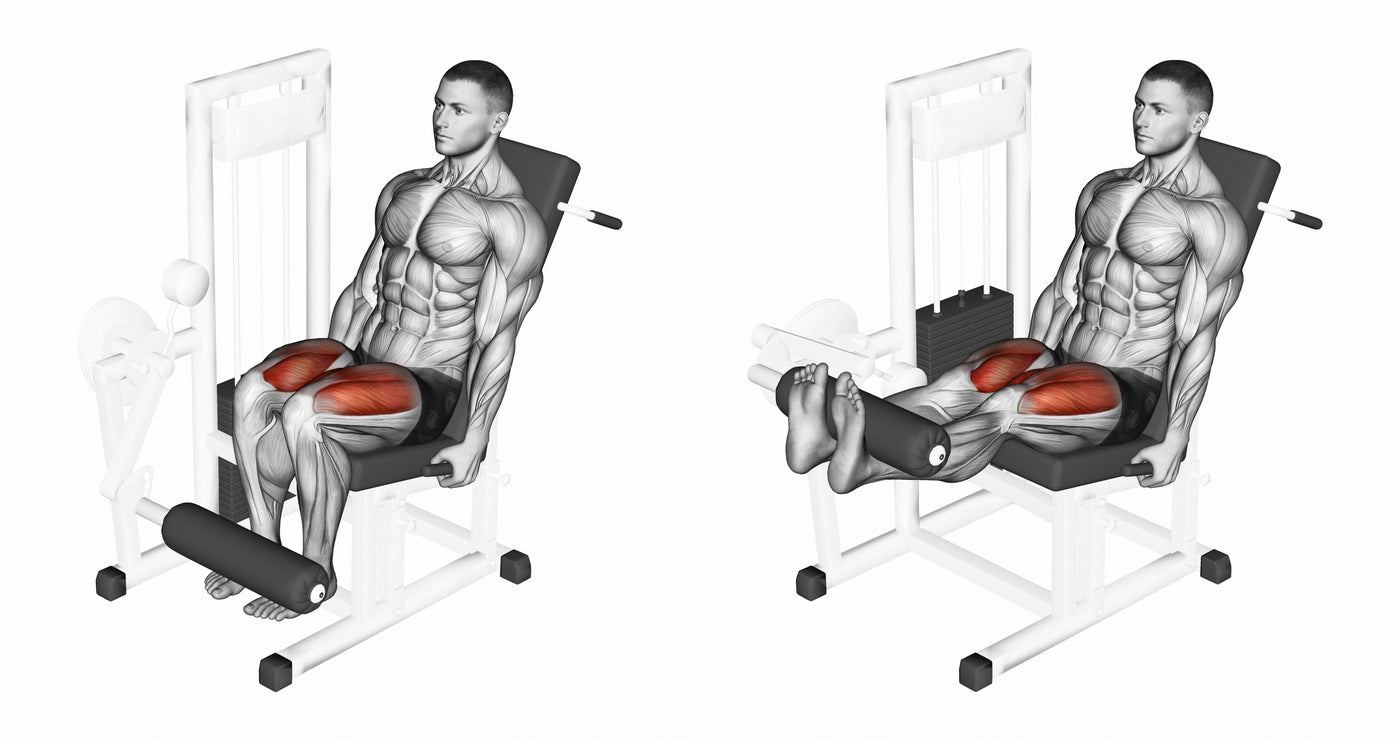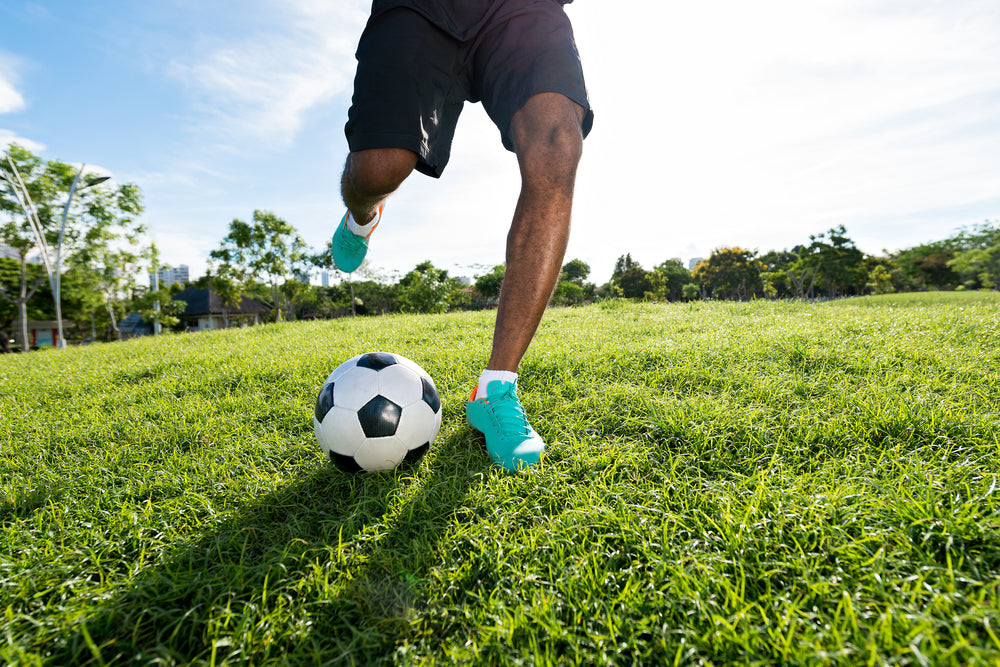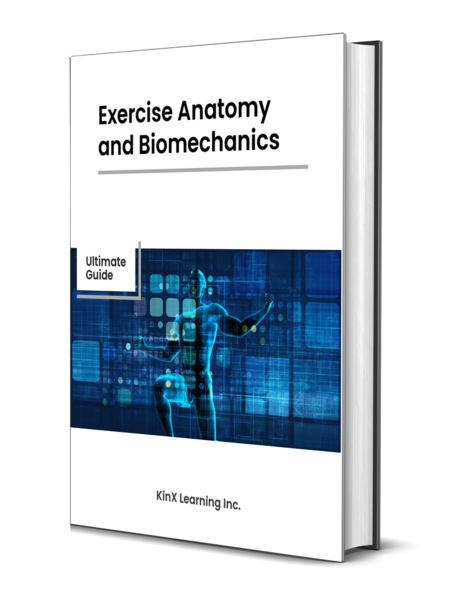Exercise Anatomy
Knee Extension(Leg Extension)
Knee Extension, commonly known as Leg Extension, is a targeted exercise designed to isolate and strengthen the quadriceps muscles at the front of your thighs. This simple yet effective movement helps sculpt and define your leg muscles while promoting knee joint stability. Including Knee Extension in your workout routine can contribute to improved lower body strength, enhanced athletic performance, and aesthetic leg development.

Major Muscles and Actions Involved
During the Knee Extension, or Leg Extension, the primary joint action is knee extension, where you straighten your leg at the knee joint. This movement engages the quadriceps femoris muscle group including the rectus femoris, vastus lateralis, vastus medialis, and vastus intermedius. As you perform the exercise, these muscles contract to lift the weight and extend the knee, contributing to the overall development and strength of the quadriceps.

Sports Uses
The Knee Extension, or Leg Extension, holds direct benefits for athletes involved in various sports that require lower body strength, power, and endurance. In sports like cycling, where powerful quadriceps are essential for efficient pedaling, and sprinting, where explosive leg strength contributes to rapid acceleration, the Leg Extension proves invaluable. Additionally, athletes in sports such as soccer and basketball, where strong quadriceps aid in dynamic movements, cutting, and jumping, can enhance their performance through targeted Leg Extension exercises. Integrating this exercise into training regimens provides athletes with a specific means to fortify their quadriceps, supporting overall lower body function and reducing the risk of injury in demanding athletic activities.
Exercise Tips
- Proper Technique: Maintain strict form during Knee Extension by aligning your knees with the machine axis. Avoid using momentum or swinging to lift the weight, ensuring that the effort is focused on the quadriceps.
- Full Range of Motion: Perform the exercise through a complete range of motion, fully extending your knees and then controlling the descent. This maximizes muscle engagement and contributes to a comprehensive quadriceps workout.
- Appropriate Weight: Begin with a manageable weight, especially if you are new to the exercise. Gradually increase the resistance as your strength improves, but prioritize controlled movements over lifting heavy weights to prevent strain on the knee joints.
- Variations for Targeting: Experiment with different foot positions or use unilateral (one leg at a time) variations to target specific areas of the quadriceps. These variations contribute to a well-rounded development of the muscle group.
- Breathing Control: Coordinate your breathing with the movement. Exhale as you extend your knees and inhale as you lower the weight. Maintaining a steady breathing pattern enhances oxygen flow to the muscles, supporting endurance during the Knee Extension.
Knee Extension VS The Squat
Knee Extension Exercise:
Muscles Targeted:
Primary: Quadriceps (specifically the rectus femoris, vastus lateralis, vastus medialis, and vastus intermedius).
Secondary: Some engagement of the hamstrings and calves, but the focus is primarily on the quadriceps.
Joint Movement:
Isolation: The knee extension exercise isolates movement at the knee joint without involving the hip joint.
Concentric and Eccentric Phases: It involves both concentric (lifting) and eccentric (lowering) phases of the quadriceps muscles.
Equipment:
Typically performed using a leg extension machine.
Stabilization:
Requires less overall stabilization compared to squats as it involves sitting on a machine with the legs moving against resistance.
Functional Application:
Limited functional carryover to real-life activities as it isolates knee extension without involving the full lower body movement.
Squat:
Muscles Targeted:
Primary: Quadriceps, hamstrings, gluteal muscles, adductors, and lower back muscles.
Secondary: Involvement of core muscles for stabilization.
Joint Movement:
Compound Movement: The squat is a compound movement involving flexion and extension at both the hip and knee joints.
Full Range: Engages a larger range of motion compared to the knee extension.
Equipment:
Can be performed with body weight, barbells, dumbbells, or various types of squat machines.
Stabilization:
Requires significant stabilization from core muscles and other stabilizing muscles throughout the body due to the free weight nature of the exercise.
Functional Application:
Has a high functional carryover to daily activities as it mimics the natural movement patterns of sitting and standing.
Considerations:
Safety: Knee extension machines can put stress on the knee joint, and it's important to use appropriate weights and maintain proper form. Squats, when performed with proper technique, distribute the load more evenly across multiple joints.
Individual Goals: The choice between these exercises may depend on individual fitness goals. Knee extensions might be more suitable for targeted quadriceps development, while squats offer a more comprehensive lower body workout.
Injury or Limitations: Individuals with certain knee issues or limitations may need to be cautious with both exercises, but squats can often be adapted more easily to individual needs.
In summary, while both exercises have their place in a well-rounded workout routine, squats offer a more comprehensive lower body workout and are generally considered a more functional and versatile exercise. However, individual fitness goals, physical condition, and preferences should guide the choice of exercises in a workout program.

Want to Learn More?
Try our premium ebook, Exercise Anatomy and Biomechanics: Ultimate Guide.
Satisfaction guaranteed.
